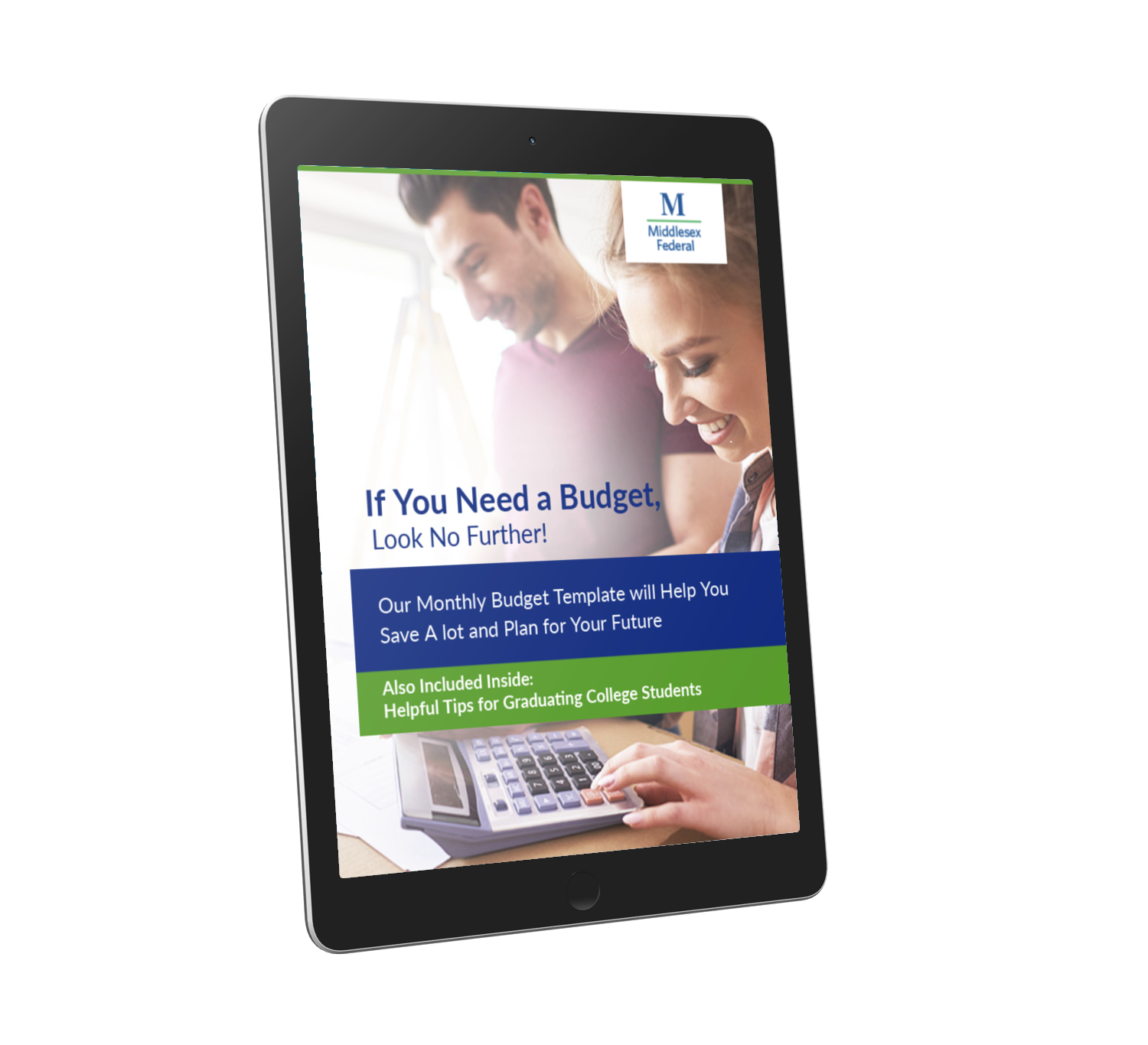
Our Monthly Budget eBook and Templates
FREE Budgeting eBook
Contents
- Introduction: Why Do You Need a Budget?
- Keeping Track of Your Monthly Expenses
- Setting Realistic Goals to Save A Lot!
- How to Use a Budget Template to Reach Your Savings Goals
- How to Budget - Comparing Income to Expenses
- Creative Ways to Stretch Your Monthly Budget
- Just in Case: You Need an Emergency Fund
- Using Your Budget Worksheet to Plan for Special Events
- Will Netflix Break Your Budget? - Know Your Recurring Costs
- The Broke Student Phase: Monthly Budget for College Life
- Your Personal Budget Template for Getting Started in Life
1.Introduction: Why Do You Need a Budget?
Creating a monthly or annual budget may seem like an overwhelming task, especially if you've never tried to do one in the past. The amounts and purposes that most people spend money on often vary from one month to the next. This is completely normal, and in fact, virtually everyone who creates a budget deals with the same issue.
While it might initially seem overwhelming, making a budget is something that will eventually make your life much easier.
A budget can give you—and your family—a simple way to discuss money. It can be an excellent teaching tool for children, and it can help reduce stress related to money concerns. Instead of wondering whether you can afford something, you will already know.
With a budget in place, you'll be better equipped to resist impulse purchases that can wreak such havoc on your finances.
 The information in this book is organized in such a way that making a budget will not only be easy, but it will make sense while you're doing it. The goal of this e-book is to give you a clear picture of your current finances, help you create a workable plan to pay your bills reliably and on time, and plan for big events and unknown expenditures that you may face in the future. You'll be able to prepare for emergency situations, which will ensure that one emergency doesn't cripple you financially.
The information in this book is organized in such a way that making a budget will not only be easy, but it will make sense while you're doing it. The goal of this e-book is to give you a clear picture of your current finances, help you create a workable plan to pay your bills reliably and on time, and plan for big events and unknown expenditures that you may face in the future. You'll be able to prepare for emergency situations, which will ensure that one emergency doesn't cripple you financially.
As you read through this e-book, try to keep your current income in mind, as opposed to your future or desired income. This helps ensure that you're setting realistic budgeting goals. Take as much time as you need to read through the following information. Your wallet (and your bank account) will thank you for it!
For more tips to get you started, review our blog "If You Need a Budget Follow These 5 Easy Tips to Get Started."
2.Keeping Track of Your Monthly Expenses
This first step may be the hardest, but once you've put your expenses to paper, you'll be in great shape for budget creation. As you work on this category, keep a few things in mind.
- If you don't have exact figures for a category, estimate as closely as possible. Round up when in question to give yourself some wiggle room, but don’t underestimate a significant expenditure.

- For expenses that you pay only once a year, divide by 12 to get a monthly figure. For weekly expenses, multiply by four to get a monthly cost.
- Some of the categories below include non-recurring expenses that may seem too small or insignificant to note but don't fall into this trap. A number of those smaller non-recurring expenses could happen at once, causing a sudden large dent in your bank account if you don't plan for them. Divide those costs by 12 to get a monthly average, but make a note that it's a non-recurring expense while completing the table to avoid confusion as you add the figures.
Use the following categories as a guide while writing down your expenses. Record your answers in the blanks provided or in an excel spreadsheet; if that is a program you prefer to use.
Housing
Housing costs should include all the things involved with basic housing. This includes:
- Rent or mortgage payment
- Electricity bill
- Gas bill
- Water bill
- Property taxes
- Homeowners Association fees
- Renters or homeowners insurance
|
HOUSING EXPENSE |
MONTHLY COST |
RECURRING? Y/N |
|
|
|
|
|
|
|
|
|
|
|
|
|
|
|
|
|
|
|
|
|
|
|
|
|
|
|
|

Transportation
This category should include all of the following expenses.
- Vehicle payments & Weekly Gas Cost Estimate
- Vehicle upkeep (including oil changes, tire replacements, battery replacements, and other recommended maintenance)
- Auto insurance & Auto registration
- Auto inspection, if required by law
- Drivers license renewal fees
- Public or private transportation costs (cab or bus fares)
|
TRANSPORTATION EXPENSE |
MONTHLY COST |
RECURRING? Y/N |
|
|
|
|
|
|
|
|
|
|
|
|
|
|
|
|
|
|
|
|
|
|
|
|
|
|
|
|
Living Expenses
The living expenses category should include your essential living expenses. This includes:
- Grocery costs
- Health coverage costs
- Non-covered medical costs
- Telephone & Internet
|
LIVING EXPENSE |
MONTHLY COST |
RECURRING? Y/N |
|
|
|
|
|
|
|
|
|
|
|
|
|
|
|
|
|
|
|
|
|
|
|
|
|
|
|
|
The Fun Stuff
This category includes those things that you may have as regular expenses but is far from necessary for living. Include the following in this category.
- Dining out
- Coffee shop costs
- Cable television
- Internet connection
- Other streaming media, for example, Netflix or Hulu
- Bar or nightclub costs
- Movie theater costs
- Concert ticket costs
- Recreational sports costs
|
RECREATIONAL EXPENSE |
MONTHLY COST |
RECURRING? Y/N |
|
|
|
|
|
|
|
|
|
|
|
|
|
|
|
|
|
|
|
|
|
|
|
|
|
|
|
|
Once you have monthly figures for each of these, add everything up to get a good general idea of how much you're spending every month. It may be more than you had realized—don't worry, the next steps will help you correct that. Be sure to keep the figure reflecting your total monthly expenditures close at hand, you'll need it in the coming exercises.
For more tips and tools for creating a budget, review our blog "Make a Monthly Budget for You and Your Family [5 Online Tools]."
3. Setting Realistic Goals to Save A Lot!
Expert financial strategists always say that the number one way to stick to a budget is to keep your goals in sight. Everybody has their own financial goals, so take this time to think about what you'd like to do with your money, both for the short-term and long-term.
 Maybe you dream of being debt-free. Or, you have a retirement savings goal that you'd love to meet. Perhaps you want to fund your child's college education or pay for a year-long sabbatical in Europe.
Maybe you dream of being debt-free. Or, you have a retirement savings goal that you'd love to meet. Perhaps you want to fund your child's college education or pay for a year-long sabbatical in Europe.
The more specific you are with the following list, the better your chances of achieving it. Think about what truly motivates you. What do you want the most out of life? Include those goals in your budget. Some people create goal inspiration mood boards with images to keep them focused.
The Short Term Goals
First, write down at least a few short-term goals, the goals you'd like to achieve within six months. These goals should be very specific, with exact dollar amounts attached. Maybe you want to
- Pay off a credit card
- Purchase a new big-screen television
- Pay for a short vacation
- Purchase a special piece of artwork or another collectible
As long as it's specific and could reasonably be achieved in the six-month time span, it can be one of your short-term goals.
The Intermediate Goals
The intermediate goals are financial goals that you can likely achieve in more than six months but less than five years. These goals may be fairly large ones, but remember that you'll have anywhere from six months to five years to achieve them.
The intermediate goals should be as specific as possible in terms of cost, but they don't have to be as exact as the short-term goals. Consider things like: 
- Save a down-payment for a new vehicle
- Pay for an elective surgical procedure that your insurance won't cover
- Pay for a small kitchen or bathroom renovation for your home
- Buy a CD, which will allow your money to make money for you
- Purchase new living room furniture
- Pay for a week-long vacation somewhere special
The "Half Decade" Goals
The half-decade goals are those that you'd like to achieve in the next five to ten years or so. These goals can be a bit less specific. Just estimate these goals as closely as you can.
The half-decade goals may include things like:
- Pay for a major family trip to Europe or other far off destination
- Add a bedroom (or even a bedroom suite) to your home
- Create a 12-month emergency fund
- Purchase a new vehicle in cash
- Save an additional large sum of money for retirement
The Ultimate Goals
The ultimate goals are the long-term goals, the ones that are your life dreams. The costs of this goal need not be exact but try to estimate if it's possible. The ultimate goals could be things like: 
- Buy a vacation home
- Pay for your children to go to college
- Purchase a property where you can build your dream home from scratch
- Launch your own business; for example, open a restaurant
- Open an animal sanctuary
For more tips on saving, review our blog "12 Ways to Save A Lot Of Money By Changing Daily, Weekly & Monthly Habits."
4. How to Use a Budget Template to Reach Your Savings Goals
With the goals firmly in mind, you can now start creating a way to meet them. Begin with one of your smaller short-term goals. Now, all you have to do is write down the dollar amount assigned to the goal and divide it by six. Remember, the plan is to achieve this goal in six months.
Once you have that figure, you know what you need to do: Come up with that amount every month. If you don't have the extra money, you just have to get creative.
Start looking for ways to cut the fat from the expenses that you've already documented. While you may not find a way to take all the money you need from one category, you can likely find several different areas to cut back in at once. PRO TIP: You might want to look at your "fun stuff" category to start.
Maybe you're spending $150 each month on somewhat overpriced coffee at Starbucks. You could make that coffee and dress it up at home for a tenth of the cost – just $15!! This cost cut nets you $135 towards your goal.
 If you're currently paying $100 a month for cable, consider whether you really need all those channels. Can you cut back to basic cable to save another $50 per month? Look closely at how much you're spending on dining out, too.
If you're currently paying $100 a month for cable, consider whether you really need all those channels. Can you cut back to basic cable to save another $50 per month? Look closely at how much you're spending on dining out, too.
Even skipping one meal out per week could save you an easy $100 per month, maybe more.
|
EXPENSE |
CURRENT COST |
COST CUT |
NET SAVINGS |
|
|
|
|
|
|
|
|
|
|
|
|
|
|
|
|
|
|
|
|
|
|
|
|
|
|
|
|
|
|
|
|
|
|
|
|
|
|
|
|
Add up all of your net savings to determine how much you can put towards your goals. These are generally very easy changes to make, but the benefits can be huge.
Consider using an online financial calculator to make financial goal planning easier. By creating and achieving these short-term goals, you'll see that managing your money better really is possible. As you achieve each goal, you can choose whether to move on to a new goal.
But what people often realize and are surprised to learn is that they don't really miss the old way of living paycheck to paycheck, and you definitely won't miss wasting money when you finally achieve one of the fun goals you’ve worked so hard to achieve!
For more ways to keep your finances organized, review our blog "Organize Your Finances - Expert Advice from a Professional Organizer."
5. How to Budget - Comparing Income to Expenses
The budget that we created above showed you exactly where all your money goes right now. This next budgeting exercise will show you how to plan ahead. The first thing you need to do is to list all of your income.
This includes:
- Your salary
- Your spouse's salary if you’re married
- Income from a second or part-time job
- Income from investments
- Income from structured settlements
- Any other reliable monthly income that your household has
Add all of your income sources and note the total. Take the figure you got by adding all your expenses in the "Putting Your Expenses to Paper" section and subtract it from your total monthly income.
You may have nothing left over, at least on paper, and that isn't uncommon. However, this is a good exercise to help you see how your seemingly big paycheck dissolves into nothing at the end of the month. It can also be a good way to reinforce your goals because you now know that those numbers are padded with some unnecessary expenditures, money that could be going toward your goals instead. 
|
Total Monthly Income: |
Total Monthly Expenses: |
Monthly Surplus or Shortfall: |
|
|
|
|
6. Creative Ways to Stretch Your Monthly Budget
Cutting out extra costs isn't the only way to allocate more money toward your goals. There may be some creative ways to stretch the budget that you've overlooked.
Have you considered a part-time or seasonal job? What about selling items that you don't need or want on eBay or another auction site? If you are a crafter, maybe you could even sell your wares on a website like Etsy.
There are also some less obvious ways to cut costs. Have you compared rates on car insurance lately? You may be able to save hundreds of dollars each year by simply switching companies. The same goes for cell phone carriers and even credit card companies.
For the items, you need to buy, consider purchasing them for less online or at a discount warehouse like Costco or BJs. You may be able to bring in far more extra money than you'd imagined this way!
If your finances still aren't lining up the way you would like, review our blog "Are Your Finances Getting You Down? Time to Get Organized!"
7. Just in Case: You Need an Emergency Fund
According to recent studies, over 60 percent of US residents have no significant emergency fund. That means the majority of Americans are one serious emergency away from financial ruin. But it doesn't have to be that way if you plan ahead.
Emergencies happen to everyone, and it is dangerous to assume that credit cards are the answer. Having access to liquid funds that could sustain you for a year is the ideal emergency budget, and it's a great goal to start working toward.
To make an emergency fund, start with a bare bones budget. This would include only the absolute essentials: Housing, food, vehicle, insurance, and other essential expenses. Get a monthly figure for what you'd need to survive, and multiply it by 12 to get the number you'd need to have a one-year emergency fund.
For more tips on getting out of debt, review our blog "12 Myths About How to Get Out of Debt."8. Using Your Budget Worksheet to Plan for Special Events
Special events like weddings, vacations, or big anniversary parties require a unique financial approach because they are one-time costs that you need to plan for and then save for over a longer period of time.
If you already know exactly what the event is going to cost (or have a reasonably close estimate in mind), it makes sense to start looking for ways to get that money together over an extended time, usually at least six months or more.
This is the ideal approach because it gives you a concrete goal and an immediate reward - the special event! Use the tactics you've already learned to trim the fat from the budget, freeing up the cash to fund your special event. 
If you only have a very vague goal in mind, for example, "a trip to Europe," there won't be any specific cost attached. It is likely that as time goes on, your dreams for the trip will grow and it will become more and more expensive. You may continue to add destination countries, or dream of ever-more-expensive lodging. This can make it seem nearly impossible to meet the target, because the target keeps moving.
Try to be as specific as you can when you are planning a one-time event or large expense, and be sure to round UP if you think the cost could be higher. As long as you have that specific financial goal, you can find a way to meet it.
For more simple tips on how to create a budget, review our blog "How to Create a Budget in 5 Steps."
9. Will Netflix Break Your Budget? - Know Your Recurring Costs
Recurring expenses can become a recurring nightmare for a person who is trying to spend wisely. The problem with recurring expenses is two-pronged.
First, they are usually very small expenses, so small that you might even forget to note them on your budget. For example, that $12 monthly fee for Netflix or the $10 monthly fee for a beauty subscription box. Maybe you pay $30 every month for a gym membership, or $50 per month to maintain your discount with a certain product.
The other problem with even small recurring costs is that they are often deducted from your bank account automatically. While this is very convenient, it also makes it hard to remember exactly how much money you really have coming in since you never even see it. 
Before you know it, you may have hundreds of dollars or more in recurring costs every month - and many of these costs may be unnecessary. Now this doesn't mean that you have to cut out all of the recurring expenses. But it does give an indication that you should take a hard look at whether you really make use of the products and services that you're paying for every month.
If you actually get your money's worth consistently, it may be well worth that recurring monthly deduction; however, many people find that they are able to trim quite a bit of money out of their monthly costs, and in this category it's virtually painless to do so!
10. The Broke Student Phase: Monthly Budget for College Life
There is a reason that so many college students are broke - in fact, a couple of reasons. First, education is expensive today! In addition to that, many college students simply don't learn good financial habits, so they don't realize how deadly the trap of easy credit can really be.
While you may not have much in the way of income during your college years, learning how to budget while you have very little cash in your pocket will put you in an excellent place for money management when you finally start to make the big bucks later on in life.
Write down all of your reliable monthly income sources to get a starting figure. This would include income from jobs, grants, scholarships, allowance from parents, and any other monthly income that you can depend on. Get a total for all of your income sources, and then chronicle your monthly expenses. 
For most college students, this includes costs such as:
- Textbooks
- Grocery shopping
- Transportation (including car payment, public transport, and related expenses)
- Dining out
- Bars and nightclubs
- Sorority or fraternity dues
- Furniture or other dorm decor
- Movies, concerts, and other live entertainment
Because your expenses will vary from one week to the next, it’s important to track your costs in each category for a month to get an accurate monthly average.
Compare your monthly expenses to your monthly income to see where the money goes and you'll soon realize why the money seems to disappear so quickly. If you are willing to make some small changes, you can start saving money right now.
Look at the non-essential costs for starters. You might be shocked at just how much you actually spent on meals at the local pizza joint last month, or how much it really costs to go out and have a beer with friends a couple of nights a week.
You don't have to completely cut out the things you love, but you'll be surprised at how much your budget can be streamlined just by cutting down on the frequency of the nonessential expenses. So instead of eating out three or four times a week maybe cook in one more night to trim some spending.
11. Your Personal Budget Template for Getting Started in Life
While getting your first post-college job is incredibly exciting, it can also be pretty scary. Adulthood hits like a tidal wave, one that is made up of a multitude of expenses. You are probably still dealing with college expenses like student loans or credit card debt from your college years.
In addition to those costs, you also have a number of brand new costs: Rent or mortgage, a car payment, all the costs associated with maintaining a home, and even the cost of needing to buy a new business wardrobe.
It may seem tempting to spend money freely in these early days after college. After all, your first job is probably paying you the most money you've ever had in your entire life — and it would be easy to spend money in a way that reflects the income surge. So making a clear budget as you begin this first job can save you a lot of stress in the long run.
Write down your expenses by category. Use the list and charts in the "Putting Your Expenses to Paper" section, with the following additions.
Remaining College Costs
This category should include any expenses that linger from college. It should include at least the minimum monthly payment on your student loans, as well as any credit card debt that you currently have.
If you're able to pay even a little bit more than the minimum on your college debt this is ideal. Paying more on the principal you owe will allow you to pay these bills off much sooner because you will accrue less initial interest, and start putting that money towards something else you really want or need.
|
REMAINING COLLEGE EXPENSE |
MONTHLY COST |
RECURRING? Y/N |
|
|
|
|
|
|
|
|
|
|
|
|
|
|
|
|
|
|
|
|
|
|
|
|
|
|
|
|
Professional Wardrobe Costs
Most people who recently left college don't have the professional wardrobe that they'll need for the business world yet. Even if you work remotely, or if you work in a casual dress environment, you'll still need at least a few stylish and professional-looking outfits for interviews and meetings. 
This is a cost that may be a bit of a wallop to the wallet, but remember that you’ll only need to spend this much on one purchase of clothes one time. After you’ve had a year or so to establish a basic business wardrobe, you’ll be able to cut down to just periodic purchases. Include clothing, shoes, and maintenance like dry cleaning in this chart.
|
WARDROBE EXPENSE |
MONTHLY COST |
RECURRING? Y/N |
|
|
|
|
|
|
|
|
|
|
|
|
|
|
|
|
|
|
|
|
|
|
|
|
|
|
|
|
The above budget is very similar to the one that you'd create if you were an already established professional, with the notable exception of college debt repayment and professional clothing. Also, bear in mind that some of your fixed costs may actually change for the better during your early to mid-20s. For example, many people experience a sharp drop in their auto insurance premiums when they turn 25.
With these figures in hand, you can add them up to find out what you'll need to spend each month. Does it seem like more than you thought, or doesn't leave you enough money to achieve your goals? That's OK. You can trim the monthly costs by planning ahead and then work toward your goals in several ways at once. See all the suggestions found in the "Setting Your Goals" and "Making Your Goals Into Reality" sections earlier in this e-book.
No matter what stage of life you're in, a budget can help you both now and in the future.
For more tips on setting up your budget for a successful future, review our blog "Top 10 Financial Planning Tips For Millennials."

Manage Your Money
We make it easy for you to manage your money with our free services like bill pay, eStatements and more!

FREE ATM Access & More
Access your money the way you want to. In your digital wallet, online, using our Mobile app or at any ATM for free.
Terms and conditions
This content is provided for general informational purposes only and does not constitute financial, investment, tax, legal, or accounting advice. Individual circumstances and current events are critical to sound investment planning; anyone wishing to act on this information should consult with a financial professional. The information contained in these articles was obtained from sources believed to be reliable and accurate at the time of publishing. We do not represent that it is accurate or complete, and it should not be relied upon as such. All opinions and estimates expressed in this article are as of publication date unless otherwise indicated, and are subject to change.






